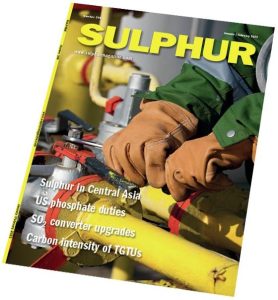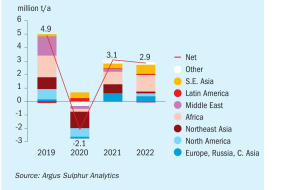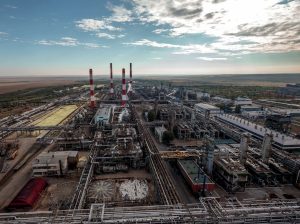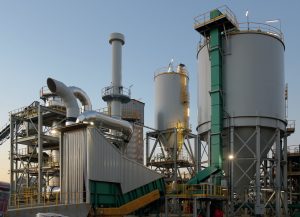
Sulphur + Sulphuric Acid 2021
A look at papers presented at CRU’s annual Sulphur + Sulphuric Acid conference, which was once again held virtually, in November 2021.

A look at papers presented at CRU’s annual Sulphur + Sulphuric Acid conference, which was once again held virtually, in November 2021.

It’s a slightly dispiriting fact about the sulphur industry that most of its producers don’t really want it. If you’re a refiner or a sour gas producer, you mainly care about the diesel and gasoline or natural gas that you can process and sell, and the sulphur is just the inconvenient component that the law and your customers force you to remove. But at times when sulphur prices, as they have at the start of this January, reach levels as high as $300/t, then the industry standing joke is that sulphur suddenly stops being a by-product or waste product, and starts to become a ‘co-product’ instead.

Meena Chauhan , Head of Sulphur and Sulphuric Acid Research, Argus Media, assesses price trends and the market outlook for sulphur.

Sulphur processing from sour gas fields dominates regional production, but the geographical remoteness of the area from end use markets and restrictions on sulphur storage means that producers often opt to reinject acid gas into oil and gas wells.

Are we on the verge of a fertilizer production, trade and supply crisis? Some usually sober and authoritative voices seem to think so.

Market Insight courtesy of Argus Media

The feed phosphates industry is caught between conflicting trends currently, according to Alberto Persona of the Fertecon fertilizer team at IHS Markit. While the long-term demand-side fundamentals look broadly stable, there is still likely to be a fight for market share due to competition from substitute products and the emergence of new projects.

More than 230 delegates from 45 countries participated in CRU’s Sustainable Fertilizer Production Technology Forum, 20-23 September 2021. To highlight this successful virtual event, we report on keynote and selected technical presentations.

Fertilizer International presents a global round-up of current potash projects.

ACI will convene the 5th European Mineral Fertilizer Summit in London on 1-2 December 2021. Fertilizer International is proud to be a partner for this year’s event.